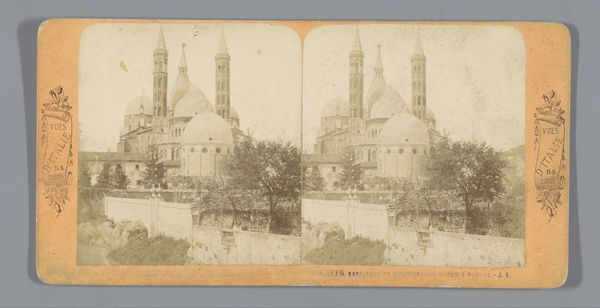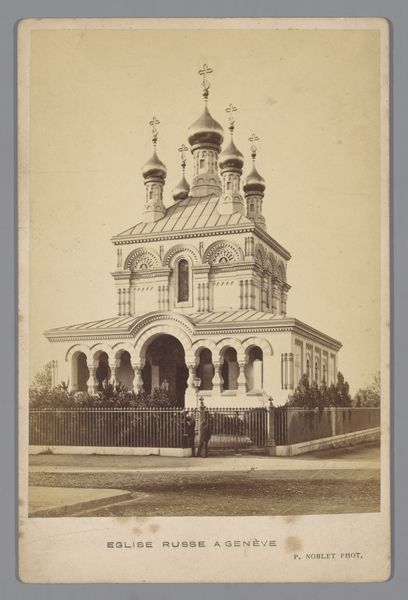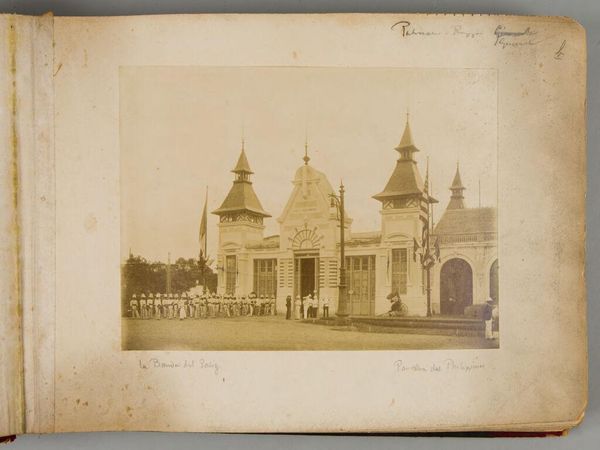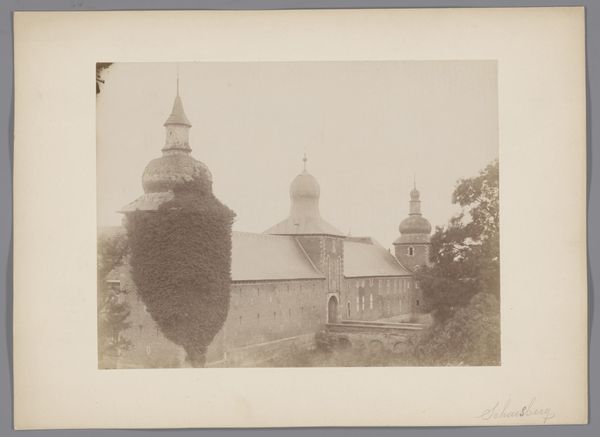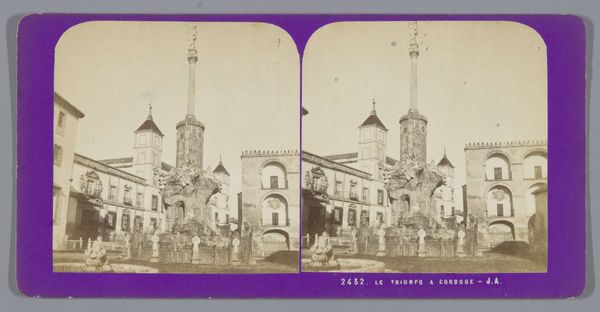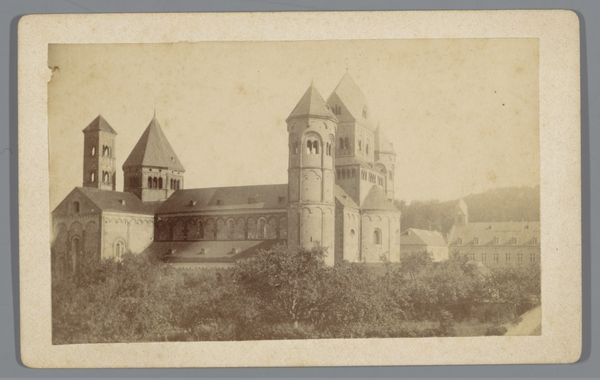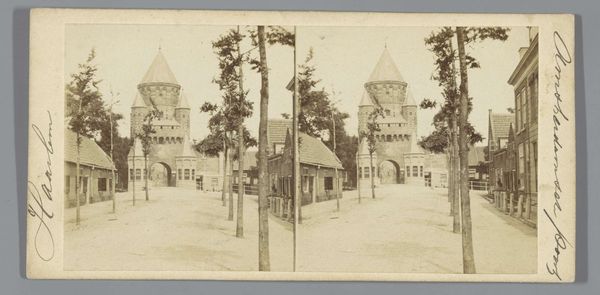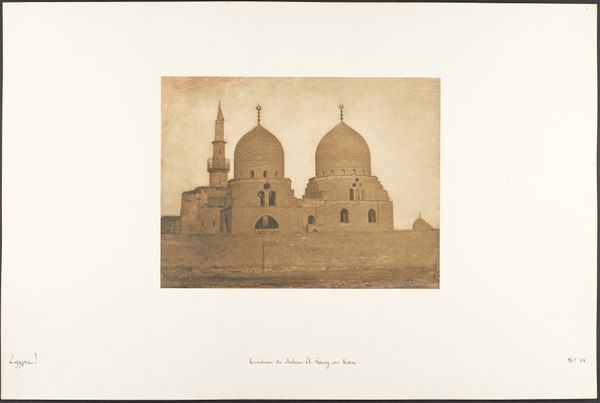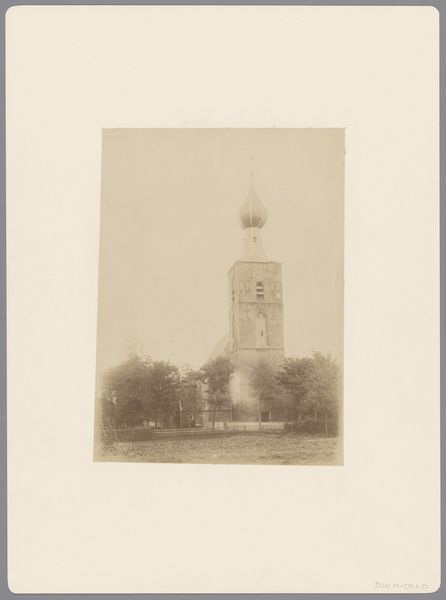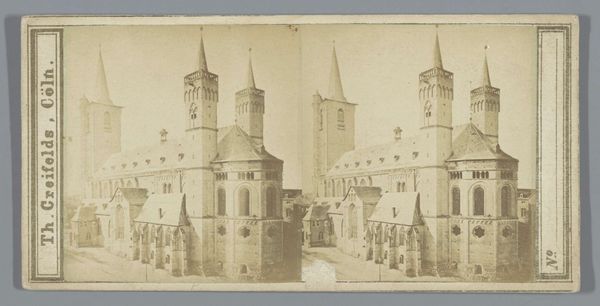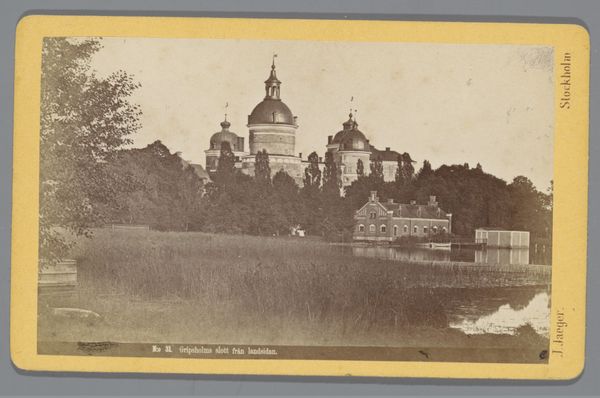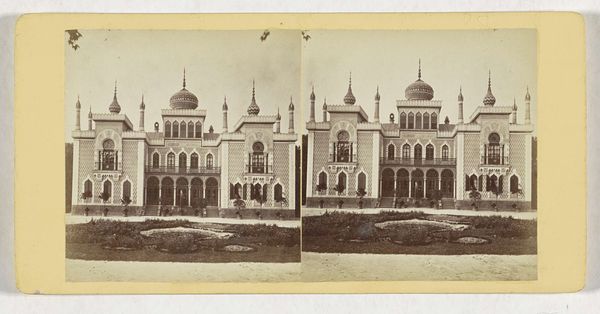
Dimensions: height 85 mm, width 170 mm
Copyright: Rijks Museum: Open Domain
Editor: This is "Exterieur van de Kerk van Maria Magdalena te Weimar" – that’s, “Exterior of the Church of Mary Magdalene in Weimar,” circa 1860-1880, by E. Schuler. It’s a photographic print, capturing a cityscape dominated by the church. I find it interesting that it uses romantic style to depict a city. How do you interpret this work? Curator: Indeed. It strikes me first as an image of cultural imposition and memory. A Russian Orthodox church, architecturally distinctive with its onion domes, planted firmly in the German landscape of Weimar. Editor: Cultural imposition? Curator: Think of the symbols carried. The onion dome itself – reaching towards heaven, visually representing prayer ascending. This church would serve as a powerful reminder of Russian influence, both religious and, perhaps, political depending on the history of the region. Is this photo also presented as a stereograph? Editor: Yes, I believe so! Why is that significant? Curator: That changes our perception yet again. The stereograph was designed to be viewed through a special viewer that would add 3D depth to the image, heightening its realness, immediacy, and power. Now this "imposition" of architecture seems more, and makes this spiritual claim unavoidable. It's almost invasively there, a challenge to traditional regional memories and faiths. Editor: I didn’t consider the photograph’s inherent 3D perspective contributing to such a strong declaration of presence and challenge to place. Curator: Early photography offers us invaluable glimpses into the shaping, recording, and challenging of place. Photography and its ability to “freeze” time lets us understand historical contexts far beyond dates.
Comments
No comments
Be the first to comment and join the conversation on the ultimate creative platform.
